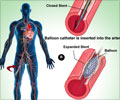Treating a heart attack before it happens might not be science fiction after all.
- More often than not, the effects of heart attack are permanent since it cannot regenerate like other tissues
- Even after surviving a heart attack, the damage cannot be reversed
- Researchers have now discovered a way to treat heart tissue in mice, before a heart attack, in such a way that provides protection months later
Long-Term Mortality of Older Patients With Acute Myocardial Infarction Treated in US Clinical Practice
Go to source).
In a recent animal study published in Nature Cardiovascular Research, the researchers identified a mechanism that allowed them to treat heart tissue and make healthy mice’s hearts more resilient before a heart attack (2✔ ✔Trusted Source
Redifferentiated cardiomyocytes retain residual dedifferentiation signatures and are protected against ischemic injury
Go to source).
How a Heart Attack Affects the Muscle
The majority of heart attacks are caused by coronary artery disease, which causes your coronary arteries to narrow. The narrowing is due to a gradual buildup of fatty deposits called atheroma . If a piece of atheroma breaks off, a blood clot, forms around this to try and repair the damage to the artery wall. This clot can then block your coronary arteries causing the heart muscle to be starved of blood, oxygen, and vital nutrients, leading to heart muscle death.The amount of damage to the heart muscle depends on the size of the area supplied by the blocked artery. As heart muscle is unable to regenerate, it never fully repairs. Instead, scar tissue forms in place of healthy cardiac muscle.
Cardiomyocytes are a type of cell in the heart that is responsible for the contraction of the muscle. This contraction of the muscle is imperative for the heart to be able to squeeze blood around the body, in response to electrical signaling that maintains the heartbeat. When these cells are damaged in a heart attack, the heart loses some of its ability to squeeze blood around the body as effectively.
While cardiomyocytes are able to proliferate in human fetuses, this ability is lost in mature adult humans. It is believed this is partly due to an evolutionary trade-off that sees the ability of mature cardiomyocytes to proliferate decline with contractile strength. This means damage caused by events such as heart attacks can not be corrected.
Post-Heart Attack Healing
The stages of maturation through which cardiomyocytes go from fetal to adult cells are the major focus of the research because cardiomyocytes can not proliferate after the damage caused by a heart attack, research has been done on how cardiomyocytes can be de-differentiated back to a stage where they are able to proliferate. Elucidating the mechanisms around this could provide information about how heart tissue damage could be reversed.Although, previous research into de-differentiated cardiomyocytes has shown that deleterious and lethal effects of irreversible de-differentiation occur. This is most likely due to the fact that de-differentiated cells could become proliferative in a way that is similar to cancer.
It has been hoped that re-differentiation of cardiomyocytes back to the state they were in before differentiation, could avoid some of these complications. However, it has been unclear if the potential beneficial effects of previous differentiation to a more proliferative state would remain.
Treating the Heart Before an Attack
Previous research has suggested that when a particular protein ERBB2, coded for by the ERBB2 gene was over-expressed, de-differentiation occurred. However, the cardiomyocytes in this dedifferentiated, more proliferative state had a limited ability to contract. Researchers then observed that when overexpression was stopped, the cardiomyocytes underwent redifferentiation and went back to their original contractile ability, and cardiac performance improved (3✔ ✔Trusted SourceERBB2 triggers mammalian heart regeneration by promoting cardiomyocyte dedifferentiation and proliferation
Go to source).
In the lab’s latest research, led by Dr. Avraham Shakked, Ph.D., they sought to investigate the mechanism behind this gene and protein and the longevity of its effects. They showed that when a transgenic mouse that had its ERBB2 gene temporarily activated at 3 months old had a heart attack 5 months later, it recovered.
This demonstrated that redifferentiated cardiomyocytes maintained some of their proliferative, and therefore healing capacity.
Probably the most exciting thing is the cardio-protective effect of this whole sequence of events that researchers were not really expecting to find or see at all, and actually that has the most potential impact at some point in the future.
What this Means for the Future of Cardiac Regeneration
The next steps for the team would involve elucidating the mechanism further. One of the things that researchers are trying to do is actually try and look into the mechanism behind that protection. Because if you can isolate the causative agent with a causative effect, then you don’t necessarily have to undergo a [de-differentiation and re-differentiation] DR cycle, which could be quite invasive, or quite dramatic.The team had several hypotheses about what could be behind this mechanism and wanted to test them one by one, he said. Seeing if the findings could be replicated in non-transgenic mice or larger mammals, such as pigs, would be necessary before considering clinical applications in humans, he explained.
The issue of understanding whether cardiomyocytes return to a physiological, differentiated state after being pushed to proliferate is a key question for clinical cardiac regeneration. What was less expected is the issue of 'rejuvenation’ of these cardiomyocytes, which however makes a lot of sense, as replication requires extensive rearrangement of the epigenetic landscape of cardiomyocytes. This is an added bonus to cardiac regeneration!
References:
- Long-Term Mortality of Older Patients With Acute Myocardial Infarction Treated in US Clinical Practice - (https://pubmed.ncbi.nlm.nih.gov/29960995/)
- Redifferentiated cardiomyocytes retain residual dedifferentiation signatures and are protected against ischemic injury - (https://www.nature.com/articles/s44161-023-00250-w)
- ERBB2 triggers mammalian heart regeneration by promoting cardiomyocyte dedifferentiation and proliferation - (https://www.nature.com/articles/ncb3149)
Source-Medindia















